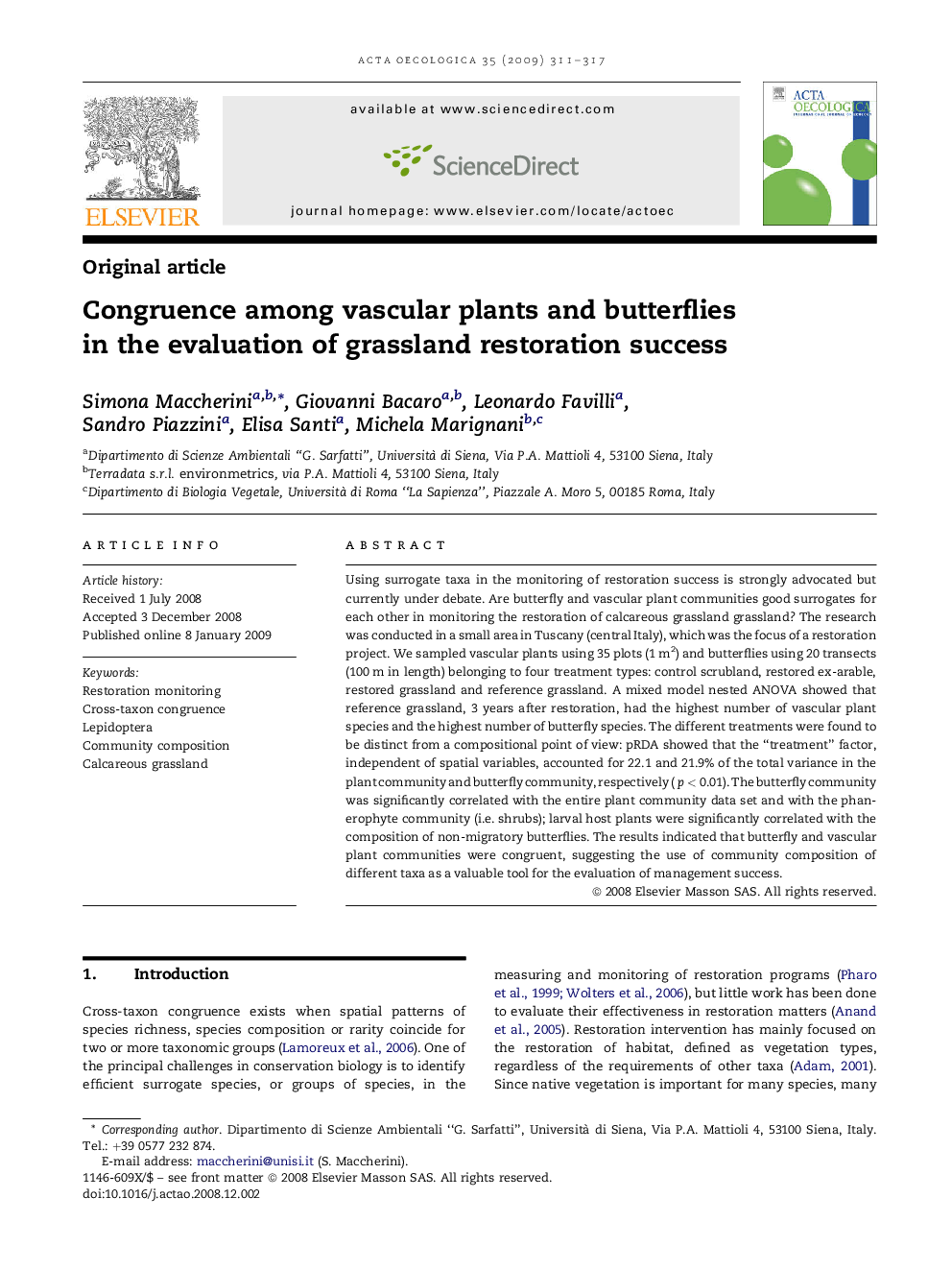| Article ID | Journal | Published Year | Pages | File Type |
|---|---|---|---|---|
| 4381293 | Acta Oecologica | 2009 | 7 Pages |
Abstract
Using surrogate taxa in the monitoring of restoration success is strongly advocated but currently under debate. Are butterfly and vascular plant communities good surrogates for each other in monitoring the restoration of calcareous grassland grassland? The research was conducted in a small area in Tuscany (central Italy), which was the focus of a restoration project. We sampled vascular plants using 35 plots (1 m2) and butterflies using 20 transects (100 m in length) belonging to four treatment types: control scrubland, restored ex-arable, restored grassland and reference grassland. A mixed model nested ANOVA showed that reference grassland, 3 years after restoration, had the highest number of vascular plant species and the highest number of butterfly species. The different treatments were found to be distinct from a compositional point of view: pRDA showed that the “treatment” factor, independent of spatial variables, accounted for 22.1 and 21.9% of the total variance in the plant community and butterfly community, respectively (p < 0.01). The butterfly community was significantly correlated with the entire plant community data set and with the phanerophyte community (i.e. shrubs); larval host plants were significantly correlated with the composition of non-migratory butterflies. The results indicated that butterfly and vascular plant communities were congruent, suggesting the use of community composition of different taxa as a valuable tool for the evaluation of management success.
Keywords
Related Topics
Life Sciences
Agricultural and Biological Sciences
Ecology, Evolution, Behavior and Systematics
Authors
Simona Maccherini, Giovanni Bacaro, Leonardo Favilli, Sandro Piazzini, Elisa Santi, Michela Marignani,
